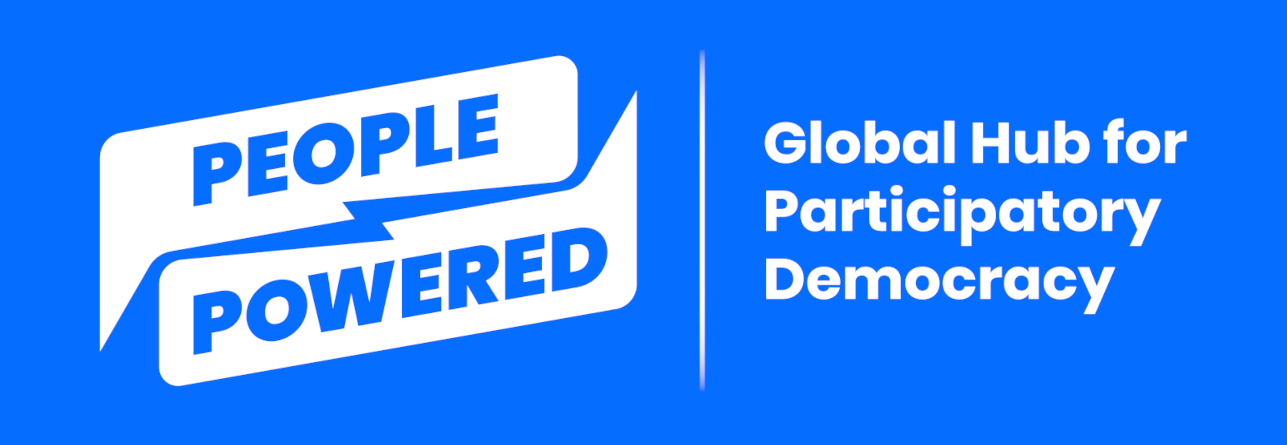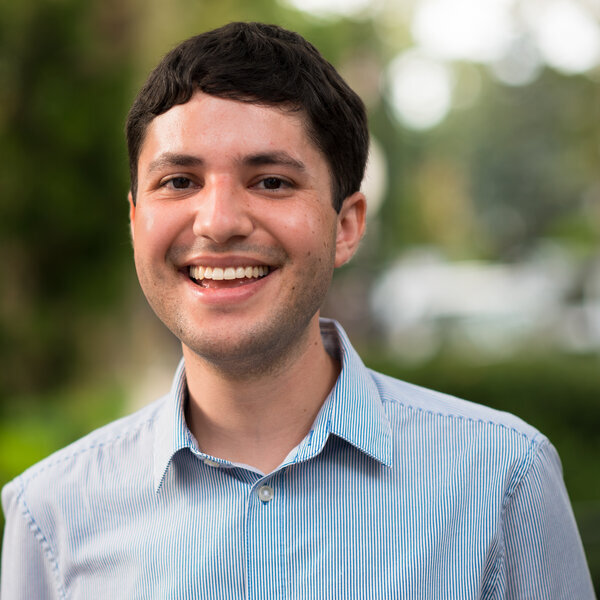Introducing a Global Theory of Change for Participatory Budgeting
/By Carolin Hagelskamp, Josh Lerner, and Nikhil Kumar
This is the first in a series of short articles on the impacts of participatory budgeting cross-posted with the Deliberative Democracy Digest.
In Taiwan, excluded migrant workers began to participate in community decision-making and developed a mutual trust with the local government. In Brazil, citizens voted to redistribute public funds to health care, and infant mortality rates declined drastically. And in Senegal, residents funded new projects to address climate change and its effects, including better rainwater drainage systems and mosquito net distribution.
These benefits for people, communities, and government resulted from participatory budgeting (PB), a democratic innovation in which ordinary residents deliberate and decide how public funds are spent. PB has become perhaps the most widespread and durable practice of participatory and deliberative democracy, adopted by as many as 11,000 cities, states, nations, schools, and institutions around the world and practiced for over three decades.
But positive results don’t materialize simply because a government or institution decides to implement PB. Many PB processes fall short of their desired impacts. What accounts for the differing impacts of PB around the world?
For the past four years, a global community of researchers and practitioners has worked to better understand and increase PB’s impacts. Starting in 2017, the William & Flora Hewlett Foundation and the Omidyar Network funded two research reports and a global co-design process to identify and address common challenges that limit PB. This led to the creation of a Global PB Hub (now hosted by our organization, People Powered), which convened a Global PB Research Board and a Global PB Practitioner Board. The board members (half from the Global South and half women) then developed a Global PB Research Agenda.
To advance this agenda, the boards recently developed a PB Theory of Change (PB ToC). This ToC brings together researchers’ and practitioners’ experiences, findings, and hypotheses about how PB can make a difference for people and communities. It draws on academic literature, practitioner reports, and many conversations. It is — as its name says — a theory, but it is based on much practical experience and backed by a growing body of scientific evidence.
What is the PB Theory of Change?
The PB ToC maps four stages of change: inputs, activities, outcomes, and impacts. While these stages may overlap in practice, the ToC aims to make the complexity of everyday practice more intelligible and help us think critically about the bigger picture.
Inputs describe the most important ingredients that go into a PB process and shape its activities, outcomes, and impacts. This includes existing resources and people who get PB started, and the context that shapes the process. Resources include money, time, technology, and materials. How these resources are used depends on the people involved — for example, committed politicians, civil servants, community partners, and technical advisors. Moreover, the broader political, economic, and social context affects how, when, and to what extent resources and people shape a PB process and what it can achieve long term.
Activities are the concrete steps of the PB process itself: planning, collecting ideas, developing proposals, voting, funding winning projects, implementing them, and monitoring and evaluating. The results of each stage and their quality depend on the investment in collaboration, learning, deliberation, and collective decision-making.
Outcomes are the relatively tangible initial changes that result from a PB process. For example, participants may gain civic skills and build connections with other residents, organizations, and government. Civil society organizations (CSOs) may gain members and form new alliances. Government may increase its understanding of public priorities, fund new projects, and build connections with residents and CSOs.
Impacts refer to long-term, systemic changes that could ultimately result from PB and its outcomes. These include politically engaged residents who trust their government, healthier and safer communities that have an expanded political imagination, and responsive and transparent governments that collect more revenues and spend money more equitably.
How can we use the Theory of Change?
The ToC is a tool that can help researchers and practitioners understand how PB can lead to desired changes. It comes to life when it spells out how elements across the four stages can lead to change over time. The examples below illustrate how this can work.
From community partners to more political and civic participation: When governments partner with CSOs from the start, they can end up with more political and civic participation. If community partners are included in the inputs, they can work to ensure that inclusion is incorporated into the PB charter or rulebook that frames the process. This may then lead to more community collaboration activities designed to engage underrepresented groups in each step of PB, with the help of CSOs. This means more diverse community members learn, collaborate, and deliberate as part of the PB process, which should result in participants gaining skills, knowledge, and connections. Over time, these initial outcomes can lead to long-term impacts: skills and knowledge empower residents to remain politically and civically active beyond the PB process, and new connections help CSOs to strengthen their alliances, all of which contributes to a stronger and more inclusive civil society.
This scenario is not purely hypothetical. Research in the United States, for example, found that governments that worked with CSOs in the design and implementation of PB saw greater participation from traditionally underrepresented groups. And PB participants ultimately became more likely to vote and advocate for community needs through other channels, such as community boards and elected officials.
From more money and political will to improved public health: When committed politicians use PB to allocate significant funds, they can end up with healthier communities. If political leaders who are ideologically committed to PB and social justice are included in the inputs, they are more likely to include formal equity criteria in the proposal development and voting activities of PB. When these committed political leaders also include large pots of money to allocate in the inputs, this combines with the equity criteria to direct more public money toward critical community needs. Increased spending results in initial outcomes of major new public infrastructure and programs, such as health centers, parks, and community gardens. Over time, these outcomes lead to long-term impacts of healthier communities, with improved indicators of public health and well-being.
In Brazil, for example, PB emerged during the transition to democracy in the 1980s and 90s. In this new democratic space, emerging leaders who were committed to social justice rose to power in key cities. They found themselves with new power over major budget funds, and a political opportunity to demonstrate a new way of governing. They implemented PB with formal Quality of Life indices embedded in the decision-making process, which led to greater spending per capita in poor districts and increased public health spending. This resulted in radical changes to public infrastructure, expanding sewer systems, water access, public transportation, schools, and health facilities to favelas and lower income neighborhoods. In cities that used PB for at least eight years, infant mortality dropped by 20%.
What’s Next
Using the PB ToC as a foundation, upcoming dispatches in this series will share insights into the impacts of PB on governance and well-being, civil society and political participation, and education and learning. Each piece will also reflect on how these findings can inform other deliberative and participatory practices. While this work draws on dozens of studies from around the world, we still need more rigorous research in different contexts to test causal pathways.
The Theory of Change is a living resource. While it builds on 30 years of research and practice around the world, we also hope the ToC will spark new dialogue among practitioners and researchers in the broader participatory and deliberative democracy community. The elements and connections in the PB ToC may help reveal casual relationships for other participatory and deliberative processes, and vice versa.
Let's use this resource to reflect more deeply about what we do and why, to think bigger about the possible consequences of our work and how small choices can lead to important changes, and to engage more with each other — across researchers and practitioners, enthusiasts and critics — about what we do and don’t know. We invite you to join us in this work.
Join a People Powered University research seminar to participate in the discussion and contribute to this growing research collaboration.
About the series
In this series of dispatches, members of the Global PB Research Board share key insights into the potential of participatory budgeting to drive social and political change, based on research conducted around the world. The series is the product of a collaboration between Deliberative Democracy Digest and People Powered: Global Hub for Participatory Democracy.
About the authors
Carolin Hagelskamp is a professor for social science and social science research methods at HWR Berlin/Berlin School of Economics and Law. She was previously director of research at Public Agenda, New York City, where she co-authored several publications on participatory budgeting in the United States and Canada. Carolin currently studies whether and how PB can affect a more equitable allocation of public funds. She holds a Ph.D. in community psychology from New York University.
Josh Lerner is the executive director of People Powered: Global Hub for Participatory Democracy. He has spent the past 20 years developing, researching, and working with participatory democracy programs around the world. Before starting People Powered, he founded and served as Executive Director of the Participatory Budgeting Project (PBP). Josh completed a PhD in Politics at the New School for Social Research and a Masters in Planning from the University of Toronto. He tweets @joshalerner.
Nikhil Kumar is research and policy associate at People Powered: Global Hub for Participatory Democracy, where he develops courses and materials, produces online content, and curates resources for participatory democracy practitioners. Previously, he worked with the Eurométropole of Strasbourg, France and the City of Helsinki, Finland. Nikhil holds a master’s degree in public policy from the Harvard Kennedy School.




![Theory of Change Illustration [PP:DDD].png](https://images.squarespace-cdn.com/content/v1/5e96d0e66ae22d58e7c3219f/1633112704988-O3WHSBWCCUBJQKSC0F9T/Theory+of+Change+Illustration+%5BPP%3ADDD%5D.png)



